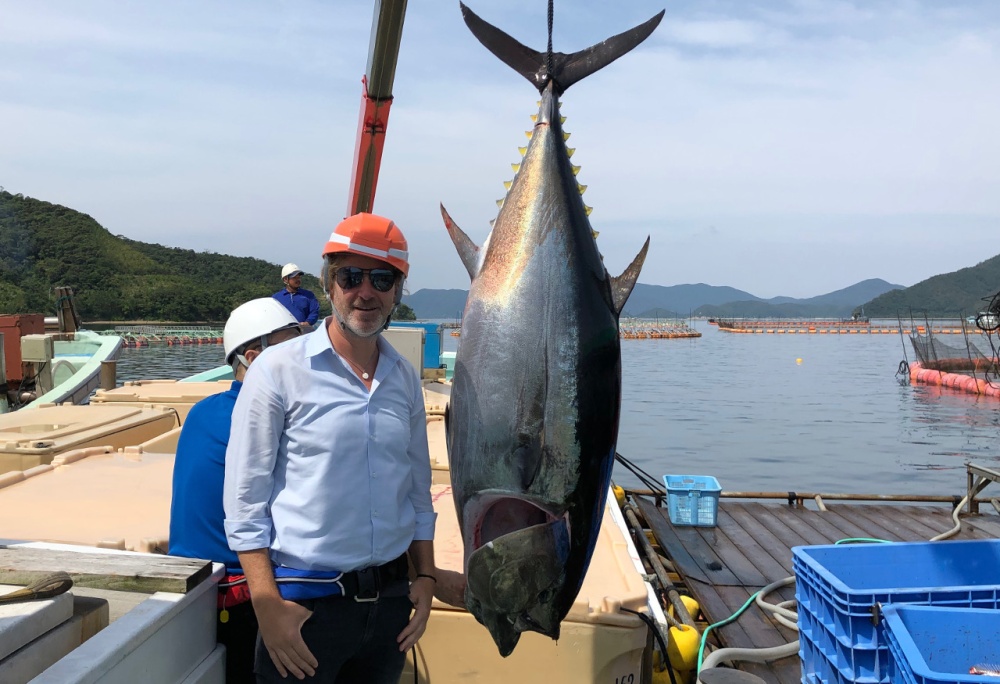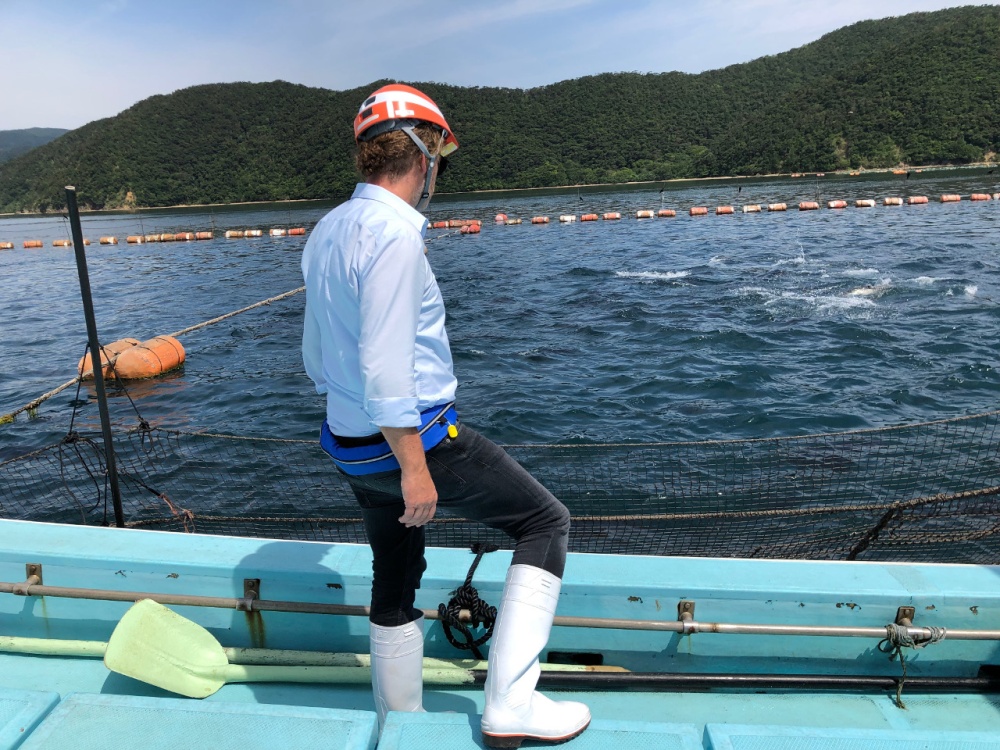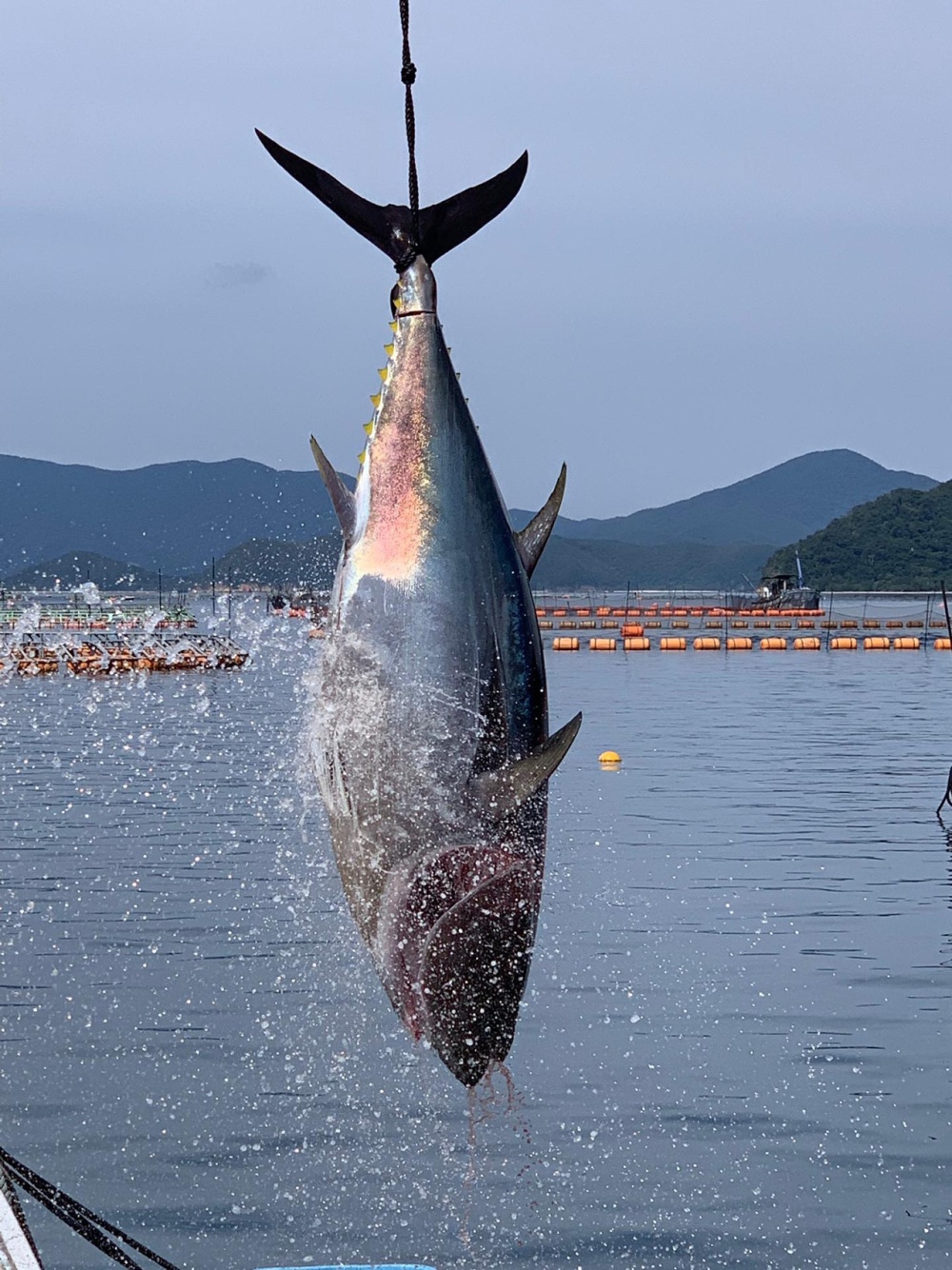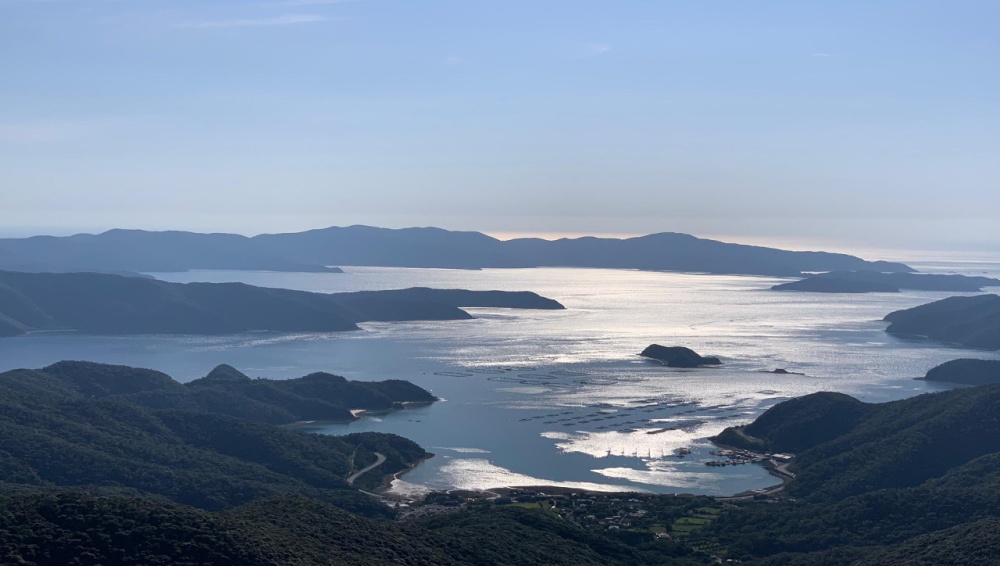1. Chile Report: Salmon Farming
At the beginning of 2019, we took the opportunity to visit salmon farming operations in the Chilean summer.

Tuna ranching — the process by which fishermen fatten up mature specimens they have caught — is being replaced by full cycle aquaculture. Here Pacific bluefin tuna eggs are being cultivated and raised to juvenile fish and thereafter grown to their marketable size in pens. This is our report from an on site visit in Japan.
Our on site visit on Amami Islands was done on a sunny day. For travel enthusiasts, the islands are around 1800 km away from Tokyo. With the airplane it takes 2 1/2 hours to get to the main airport Honiara. Because weather conditions can change quickly, we made sure before we started our trip how the weather forecast looked like.
We flew to Honiara, on the Amani Archipelago that Japan Tourism’s webpage describes as "thriving coral reefs, immaculate sandy beaches, and primeval forests."
The reason for our trip was to visit a Tuna fish farm on the Amami Archipelago. We wanted to gain more insights about its operations and Pacific bluefin tuna fish farming in general. The company we visited operates on the Amani Archipelago and on Okinawa. On Amami Islands, the fish farm we visited does the the breeding and growing out of the Pacific bluefin tuna before they are being sold.
It is quite a site to see when an 80 kg bluefin tuna is taken from the net. We were lucky that we were there when this operation happened.
Much of the Pacific bluefin tuna is produced by capturing juvenile fish at sea and then fattening them in panes.
Thereafter, they are made to gain weight and most importantly fat. Then they are being constantly fed until satiation, usually over a 6 months period. The tuna’s fat ration is an important factor that will determine its price.
Nevertheless, to stop the depletion of tuna stocks, fully farmed tuna is the best route. Such tuna is being bred from eggs spawned by tuna themselves. These are then artificially hatched. In turn, market demand can be met without further depleting Pacific bluefin tuna stocks.

Bluefin tuna is one fo the world’s most endangered and most valuable fish species. Unfortunately, bluefin tuna are not well-suited to aquaculture. For instance, fish die on collision with the walls of the sea pens when swimming at speed. Moreover, the cannibalise each other.
The FAO has pointed out that a successful aquaculture industry for bluefin tuna depends on closing of the life-cycle in captivity as well as producing fry in nurseries. The above illustrates that this is still a challenge.
In Japan, fish farming or aquaculture facilities raising bluefin tun account for some 30% of all supplies of Pacific bluefin tuna, the best of its kind.

Why is full cycle aquaculture of Pacific bluefin tuna a challenge
Sustainable sushi is something that the market wants. But breeding tuna takes around 1 year from having the egg to holding a 15cm long fish in your hand. As well, to get the tuna to grow and weigh about 60 kg takes another 3 years.
Besides the time factor, trying to grow tuna using fish farming has to cope with two challenges:
Mortality of the fish in the cages is still relatively high. Raising the fish in a full cycle – meaning from the egg to a full grown Bluefin Tuna – is hard to do successfully.
25 kilograms of fish feed are needed to let a tuna gain 1 kg of weight in captivity.
Local reports have pointed out that fishes nearby had also caught diseases. One reason that is being mentioned is that fish feed given to tuna held in captivity could be the reason.
This risk also needs to be managed carefully to avoid negative effects on fish at sea due to fish farming operations nearby.
As well, the full cycle aquaculture of Pacific bluefin tuna goes way beyond just simply fattening the fish. Various steps must be carefully followed and managed including:
letting the fish grow out to marketable size.
Governments have always supported tuna farming. The European Union, Japan and Australia have granted fish farming operations various kinds of supports including tax breaks and investment credits. Quick profits had lead to more investments into fishing boats, warehouses and even airports for Tuna export.
Fully farmed bluefin tuna is sustainable and welcomed by sushi lovers. This in part also explains while the tuna that got caught during our site visit was being exported to Europe.
What do you want to know about tuna ranching or farming?
Have you had a chance to taste farmed and wild Pacific bluefin tuna and farmed one?
Do you think that Tuna farming is a viable alternative to overfishing tuna stocks?
Leave a comment!

Comments
Marco from Bonafide
November 17, 2023
Thank you for sharing your insights about the current state of Bluefin tuna stocks and the various models for tuna farming and ranching. We are also very interested in the idea of replicating successful models for other tuna species. Understanding the necessity of the right conditions, business, and operational models, we see a lot of potentials to explore in this area. We are grateful for your invitation to visit the Maltese ABFT operations. It would be an excellent opportunity for us to learn more and see these operations firsthand. We would definitely like to keep in touch and, should the opportunity arise, we look forward to the possibility of visiting you in Malta.
George D. Mantas
November 16, 2023
Thank you for summarising! Bluefin tuna stocks are strictly monitored and stock recovery is happening in various regions and tuna species. Atlantic bluefin tuna (Thunnus thynnus) for example moved from Endangered to Least Concern (IUCN reports). Coupled with the Japanese appetite for Bluefin tuna to be stagnant in recent years the ROI for closed-cycle tuna farming is not so attractive unless production challenges are drasticly addressed. However, the ABFT / PBFT ranching model is an interesting and successful model that should be explored and replicated for other tuna species that looking to achieve higher-quality end products and fetch higher prices from the market. The idea is not new and has been tried in places but requires the right conditions and business and operation model. The Bonafide team is very welcome to visit us in Malta and show them around the Maltese ABFT operations.
Bonafide
December 13, 2021
Dear Mr. Rohani
Thank you for your question. As investors, we trust in the knowledge and skills of the employees in our aquaculture companies in which we are invested. Our speciality is therefore the assessment of the financial potential of aquacultures and not the farming of fish as such. We recommend that you contact the companies that farm yellowfin tuna directly to find out about their know-how. Thank you very much.
Your Bonafide Team
Prof. M.S.Rohani
December 11, 2021
Hi , I am an aquaculture researcher in IRAN . Do you have any experience for yellowfin tuna fattening and aquaculture ?